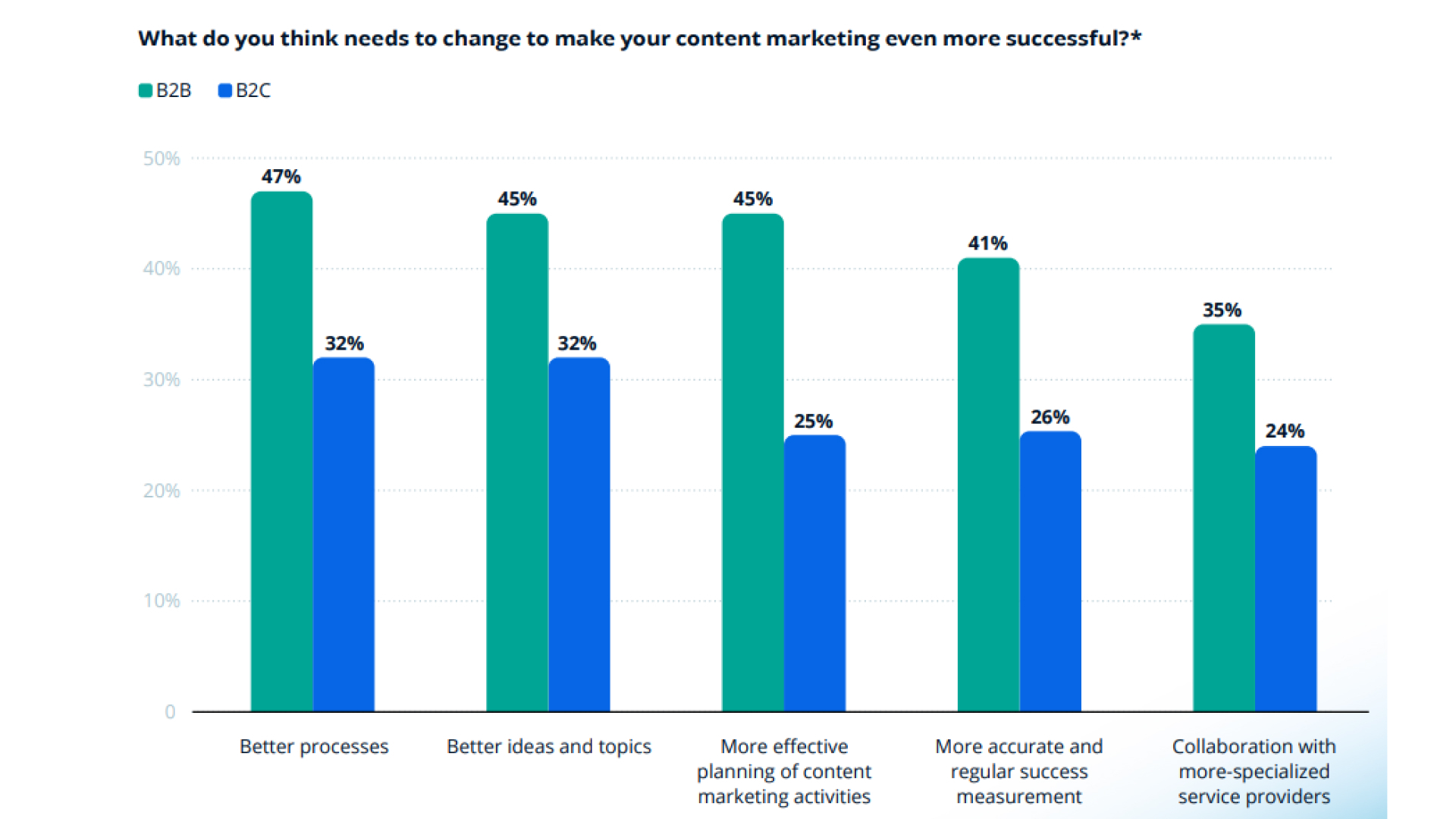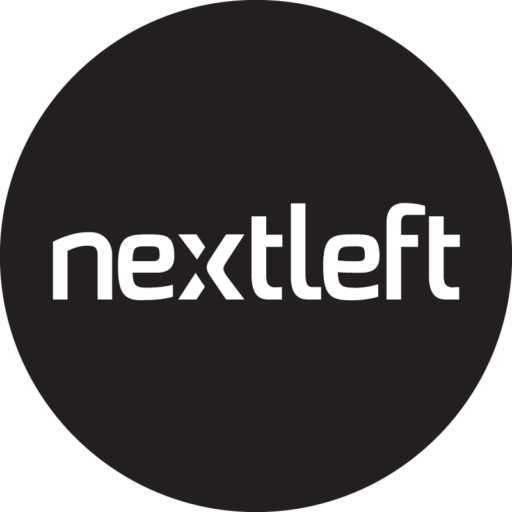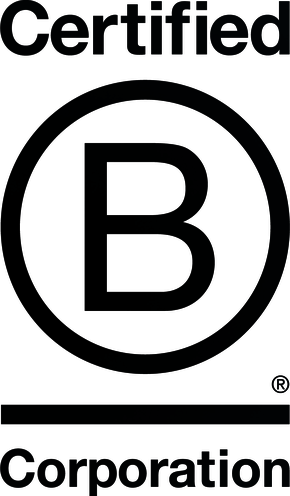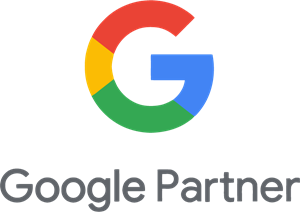Content marketing started out as a buzzword, but has made its way into a cornerstone of modern digital strategy. Most people think of it as blogs and videos, but it’s so much more than that. It’s a methodical approach to engaging your audience and guiding them down the path toward making a purchase.
The goal? Turning content into customers.
Here’s what to know about the strategies that transform compelling, high quality content into real business results. Whether you’re looking to attract new leads, increase conversions, or build brand authority, these tactics will help you leverage your content more effectively.
What is Content Marketing and Why it Matters
Your content marketing plan is the strategic creation and distribution of valuable, relevant, and consistent content to attract and retain a clearly defined audience, and ultimately, to drive profitable customer action.
Unlike traditional advertising, which often interrupts audiences, content marketing is designed to build trust over time. It educates, informs, and/or entertains your audience in ways that make them more likely to buy from you. This approach is designed to create a relationship, as opposed to just a transaction.
Key Goals of Content Marketing
The primary objectives of content marketing include increasing brand awareness by reaching new audiences through valuable content and building authority and trust through consistent, expert-level insights. Additionally, your content marketing can generate qualified leads by attracting people actively seeking solutions and drive conversions by nurturing prospects throughout different phases of a buyer’s journey.
Why Content Marketing is More Sustainable
This approach is more sustainable than traditional methods because it compounds over time. A single piece of quality content can generate traffic and leads for months or even years to come. Unlike paid advertising that stops working the moment you stop paying, well-optimized “evergreen” content continues delivering value long after publication.
Content marketing also costs significantly less than traditional outbound marketing while delivering higher engagement rates and better conversion metrics, so it’s an efficient and essential strategy for businesses of all sizes.
What Modern Content Marketing in 2025 Requires
According to Statista, content marketing in 2025 requires the following:
- Better processes (47%) – Simplified and more coordinated workflows.
- Better ideas and topics (45%) – Creativity and audience relevance are key.
- More effective planning (45%) – Clear timelines and cross-team alignment.
- Regular performance evaluation (41%)
- Collaboration with specialized agencies (35%) – Outsourcing is seen as a way to access expertise.

Know Your Audience First
Before you can create meaningful content, you need to be clear on who you’re targeting it to. Knowing your audience ensures that your content is relevant and impactful, which can lead to higher engagement and conversion rates.
Essential Audience Research Methods
To define your audience effectively, start with these proven methods:
- Customer surveys and interviews to gather direct feedback about needs and preferences
- Detailed buyer personas based on demographic and psychographic data
- Analytics tools like Google Analytics and Facebook Insights for behavioral insights
- Social listening on platforms like Reddit, LinkedIn, or X (formerly Twitter) to discover pain points and conversations
Once you’ve moved through one or more methods, you’ll have a much better picture of your audience and what they’ll be looking for from you.
Create Detailed Customer Journey Maps
Map out how users interact with your brand, from initial discovery to final conversion and beyond. This comprehensive view helps identify key content opportunities for each stage of the journey.
A typical customer journey includes awareness (problem recognition), consideration (solution research), decision (vendor selection), and retention (ongoing engagement). Each stage needs different types of content to be effective.
Use Segmentation Strategies
You can group your audience by demographics, behavior, purchase history, or engagement level. With segmentation you can create a more personalized experience, and messaging that resonate with specific groups.
For example, new subscribers might receive educational content, while long-term customers will get product updates and advanced tips. This targeted approach significantly improves engagement and conversion rates, because everyone in your audience is receiving relevant content.
Understand Search Intent to Align Content with Demand
Search intent is the reason behind a user’s search query. Aligning your content with the right intent makes it easier to attract qualified traffic that’s more likely to convert. When done effectively, this alignment also increases your chances of ranking higher on search engine results pages for the queries that matter most to your audience.
The Four Types of Search Intent
- Informational: Users seeking knowledge or answers (“how to improve SEO”)
- Navigational: Users looking for a specific website or page (“NextLeft blog”)
- Transactional: Users ready to make a purchase (“get SEO services“)
- Commercial investigation: Users comparing options before buying (“best content marketing agencies”)
Analyzing Search Intent Effectively
You can analyze search intent using several methods, including keyword research tools like Ahrefs or SEMrush to understand search volume and competition as well as Google Search Console data to see which queries drive traffic to your site. Also consider using a SERP analysis to examine what types of content currently rank for your target keywords.
Build Topic Clusters and Authority
Once you know the search intent you’re targeting, organize related content into clusters centered around a core topic. This approach enhances your site structure, improves SEO performance, and positions your brand as an authority in your field.
Topic clusters allow you to create a comprehensive pillar page about a broad topic, then link to more specific subtopic pages. This strategy helps search engines understand your content’s relationship and your depth of expertise.
Build a Data-Backed Content Strategy
A successful content marketing strategy outlines the content you’ll create, why you’re creating it, and how it supports your business goals. Without a clear strategy, content efforts can lack focus and won’t deliver measurable results.
Content Types and Their Purposes
It’s essential to incorporate a variety of formats to engage different audience preferences, such as:
- Blog posts for awareness and SEO
- Case studies for consideration and social proof
- Videos for engagement and complex explanations
- Social media content for community building
- Email newsletters for nurturing and retention
- Whitepapers and eBooks for lead generation
Each content type serves a specific purpose depending on the stage of the customer journey. For example, blog posts excel at attracting new visitors, while case studies help prospects evaluate your solutions and determine if they meet their needs.
Competitive Content Analysis
You’ll want to conduct regular competitive content analysis to understand what your competitors are doing right and identify gaps in the market. This research reveals opportunities for differentiation and helps you avoid duplicating existing content.
To do this, look at your competitors’ most popular content, their content frequency, topics they cover, and engagement levels. With this information you can address your own content planning and create more compelling alternatives.
Resource Planning and Team Coordination
Successful content marketing requires proper resource allocation, so you’ll want to assign clear responsibilities across your internal team. You can also consider partnering with a San Diego content marketing agency for execution support. A robust content marketing strategy ensures that your team has the right processes, tools, and direction to deliver consistent, high-impact results.
Additionally, ensure you consider factors like content production capacity, skill gaps, budget constraints, and timeline requirements when planning your content calendar.
Create Conversion-Focused Content
Content that nurtures leads through the funnel has a measurable impact on your bottom line, so the key to success in this area is creating content that not only informs but also persuades and motivates action.
High-Converting Content Types
There are several content types that perform better at converting leads into customers. To increase your conversion chances, focus on these proven content formats:
- Product comparisons that position your solution favorably
- Customer testimonials and success stories for social proof
- Downloadable guides that capture lead information
- Landing pages optimized for specific conversions
- Demo videos that showcase your product in action
Using these with the right target audiences can add significant value for audience members and encourage a higher conversion rate.
Storytelling and Emotional Connection
It’s crucial to use storytelling techniques and emotional triggers to foster deeper connections with your audience. Relatable stories help audiences visualize success using your solution and create memorable experiences that influence purchasing decisions.
Effective storytelling includes relatable characters (your customers), clear challenges (problems your solution solves), and satisfying resolutions (successful outcomes). In short, people want to be able to put themselves into the narrative and see how your solution will add value to their lives— this is the essence of customer success.
A/B Testing for Optimization
You should continuously test headlines, visuals, calls-to-action, and content formats to identify what drives the highest engagement and conversion rates. Even small improvements can significantly impact your overall results, so it’s important to adjust as needed.
Test one element at a time so you can isolate variables and ensure accurate results, and ensure you document your findings to build a knowledge base of what works best for your audience.
Offer Low-Friction Conversion Opportunities
Low-commitment offers like free trials, demos, and downloadable resources reduce hesitation and build trust with potential customers. These “soft” conversions allow you to capture leads who aren’t ready to make a purchase decision.
Effective Lead Magnets
Create valuable gated content such as:
- Industry reports and research studies
- Template libraries and toolkits
- Educational webinars and workshops
- Free consultations or assessments
- Product trials or demos
Keeping this information gated encourages sign-ups, email lists, and other levels of interaction that continue to get your products and solutions in front of potential customers.
Clear Calls-to-Action and Follow-Up
When you ensure every offer includes a clear, compelling call-to-action, you’ll tell users exactly what to do next. That removes friction by minimizing form fields and clearly communicating the value they’ll receive.
You can also set up automated follow-up processes including email sequences, retargeting campaigns, and lead nurturing workflows to maintain engagement after the initial conversion.
Progressive Profiling and Lead Scoring
Data isn’t a one-and-done proposition. You’ll want to collect additional data over time through progressive profiling rather than overwhelming prospects with lengthy forms upfront. It helps to implement lead scoring to prioritize sales outreach based on engagement level and fit criteria.
This gradual approach to data collection improves conversion rates while still gathering the information you need for effective follow-up and personalization.
Promote Your Content Strategically
Creating excellent content is only half the battle, and strategic promotion ensures it reaches the right people at the right time. Without proper distribution, even the best content may go unnoticed.
Multi-Channel Promotion Strategy
Use a balanced mix of organic and paid channels, including SEO optimization for long-term organic visibility, social media marketing for community engagement, email marketing for direct audience communication, and influencer partnerships for expanded reach. Also consider adding in PPC campaigns for immediate visibility and content syndication on relevant platforms, for a broader reach.
Content Repurposing for Maximum Impact
When you transform single pieces of content into multiple formats you can maximize their impact and reach different audience preferences. For example, turn a comprehensive blog post into a video script, infographic, podcast episode, and series of social media posts to multiply your content’s value. This requires minimal additional effort when compared to creating entirely new content for each channel.
Email List Building and Nurturing
Build and nurture your email list with consistent, value-packed updates. Since email marketing delivers the highest ROI of any digital marketing channel, list building should be a critical priority.
Make it your goal to provide genuine value in every email, whether that’s through educational content, exclusive insights, or special offers. Avoid being overly promotional, and aim for an 80/20 split between valuable content and promotional messages.
Community Building and User-Generated Content
It’s important to encourage user-generated content and community interaction to reinforce credibility and brand affinity. Customer-created content is often more trusted than brand-produced content and helps build a sense of community around your brand.
Leverage Marketing Automation and Personalization
When you use marketing automation tools you can scale personalization efforts and deliver timely, relevant content based on user behavior and preferences.
Key Automation Opportunities
There are a number of high-impact automation workflows you can use, including behavior-triggered email sequences based on website activity, dynamic content that changes based on user characteristics, and retargeting campaigns for website visitors who don’t convert. Additionally, don’t forget about cart abandonment emails for e-commerce businesses and lead nurturing sequences that deliver value over time.
Popular Automation Platforms
Tools like HubSpot, Marketo, Mailchimp, and ActiveCampaign help streamline workflows and maximize ROI through intelligent automation and detailed website analytics. When you choose a platform, make sure it integrates well with your existing tech stack and provides the features most important to your specific use cases.
Personalization at Scale
You can use data to personalize your content experiences without manual effort. This can include personalized email subject lines, customized landing page content, or product recommendations based on browsing history. Even simple personalization like using a prospect’s name or company can significantly improve your engagement rates.
Build Trust Through Social Proof and Authority
Trust is a major driver of conversions, especially in competitive markets, so you’ll want to consider incorporating multiple forms of social proof to reinforce credibility and reduce purchase anxiety.
Types of Social Proof to Leverage
Include these trust-building elements throughout your content:
- Customer testimonials with specific results and outcomes
- Case studies that detail the complete customer journey
- Client logos from recognizable companies
- Expert endorsements from industry authorities
- User reviews and ratings
- Social media mentions and shares
- Industry awards and certifications
The more legitimate social proof you have scattered throughout your content, the better.
Thought Leadership Development
Develop thought leadership by publishing original research, contributing to industry publications, speaking at conferences, or co-hosting events with respected partners. Thought leadership positions your brand as an expert source, making prospects more likely to choose your solutions over competitors.
Link Building and Authority Signals
Earning backlinks from reputable websites boosts both SEO performance and brand authority. It’s a core focus of any results-driven SEO and content marketing agency. Premium link building can change the game for your company and its products or services. It’s important to focus on creating linkable assets like original research, comprehensive guides, or unique insights that other websites want to reference and share.
Measure, Analyze, and Optimize
Analytics ensure you’re investing time and resources in strategies that deliver real results. Without proper measurement, you’re essentially operating blind.
Essential Metrics to Track
The main key performance indicators to track include:
- Conversion rates for different content types and channels
- Engagement metrics like time on page and bounce rate
- Traffic sources to understand which channels drive the most valuable visitors
- Lead quality based on sales qualification and conversion rates
- Customer acquisition cost and lifetime value
- Return on investment for content marketing efforts
Ensure you’re tracking metrics that make sense for your business, and consider pairing them down as you dial in what you need to know.
Analytics Tools and Platforms
Tools like Google Analytics, HubSpot, Hotjar, and Ahrefshelp you gain comprehensive insights into your content performance. Each tool provides different perspectives on user behavior and content effectiveness.
Attribution Modeling
When you implement multi-touch attribution you can better understand the complete customer journey and give appropriate credit to each touchpoint. This comprehensive view helps optimize budget allocation across channels. By setting up proper tracking with UTM parameters and conversion goals, you can also visualize funnels and identify areas for improvement.
Assemble the Right Content Marketing Team
A successful content marketing program relies on having the right people in the right roles. Whether you build an internal team or work with external partners like our San Diego content marketing agency, clearly defined responsibilities are crucial.
Essential Team Roles
Key positions for content marketing success include:
- Content strategists who plan and oversee the overall approach
- Writers and editors who create compelling, error-free content
- Designers who create visual elements and ensure brand consistency
- SEO specialists who optimize content for search visibility
- Data analysts who track performance and identify opportunities
- Project managers who ensure timely execution and quality control
If you don’t have an internal team for this, an SEO content marketing company can be a great partner for your goals.
Cross-Department Collaboration
It’s vital to collaborate closely with sales, customer support, and product teams to ensure your messaging aligns with customer needs and business objectives. These departments provide valuable insights about customer pain points, common questions, and successful solutions. With regular communication between teams you can prevent mixed messages and ensure that content supports the entire customer experience.
Outsourcing Considerations
If you lack internal bandwidth or specific expertise, consider working with a reliable SEO and content marketing agency or hiring specialized freelancers. Many organizations benefit from outsourcing, and a recommended content marketing agency San Diego businesses trust for quality and results can be an important and valuable part of the team.
Be sure to budget accordingly for both internal resources and external partnerships, and don’t overlook the importance of training and upskilling existing staff to maximize your team’s capabilities.
Overcome Common Content Marketing Challenges
Every content marketing program faces obstacles, but recognizing and preparing for common challenges helps ensure long-term success.
Addressing Consistency Issues
You can combat content inconsistency with detailed editorial calendars that specify topics, deadlines, responsible parties, and distribution channels. Consistency in your publishing schedule and quality standards builds audience trust and improves SEO performance. Take the time to create content templates and style guides to maintain consistent quality, even when multiple people contribute to content creation.
Resource Optimization Strategies
You can optimize and stretch your limited resources by repurposing evergreen content across multiple formats and channels, batching similar tasks to improve efficiency, and using content templates to speed up production, along with focusing on high-impact activities that drive the most results and automating repetitive tasks where possible. Incorporating digital asset management tools can also streamline how your team organizes, stores, and repurposes content across campaigns.
ROI Measurement and Justification
It’s vital to tie every content initiative to specific, measurable business goals, as this alignment makes it easier to demonstrate value and secure ongoing support and resources. Additionally, track both leading indicators (traffic, engagement) and lagging indicators (leads, sales) to show the complete impact of your content marketing efforts.
Crisis Communication and Negative Feedback
When faced with negative feedback or criticism, it’s essential to respond transparently and professionally. You can use negative feedback as an opportunity to improve your content and show your commitment to customer satisfaction. Your company should have a crisis communication plan in place that outlines how to respond to different types of negative situations quickly and appropriately.
Stay Ahead of Industry Trends
The content marketing landscape evolves constantly and staying current with emerging trends and technologies ensures your strategy remains effective and competitive.
Current and Emerging Trends
Key trends to monitor and consider implementing include:
- AI-assisted content creation tools that improve efficiency (Think idea generation, not writing, as a human writer is still vital to quality copy).
- Interactive content like quizzes, polls, and calculators (Give your customers something fun or quirky that they can relate back to your company).
- Live streaming and real-time engagement opportunities (Let your customers see who’s behind the solutions they’re getting).
- Personalized customer experiences based on behavioral data (Customers want to feel seen and heard to continue engaging with you).
- Voice search optimization for changing search behaviors (It’s fast, easy, and convenient to search by voice).
- Virtual and augmented reality content experiences (Help your customers feel like they’re part of the moment, no matter where they are).
- Sustainability and social responsibility messaging (Customers need to know that you care about others and the environment around you).
Continuous Learning Resources
Stay informed through ongoing learning opportunities, such as industry newsletters from trusted sources like the Content Marketing Institute, and professional conferences and virtual events. You can also gain value through online courses and certification programs, competitive analysis and regular market research, networking with other marketing professionals, and experimentation with new platforms and formats.
Agile Content Strategy
It’s important to build flexibility into your content strategy so you can quickly adapt to new opportunities or changing market conditions. With regular strategy reviews and performance assessments help identify when adjustments are needed, you can stay on top of changing conditions.
Turn Strategy into Action
Success in content marketing comes from consistent execution of proven strategies tailored to your specific audience and business goals. The key is developing an effective content marketing strategy that aligns with both audience needs and measurable outcomes.
Key Takeaways
Focus on these essential principles:
- Know your audience deeply through research and ongoing feedback
- Align content with search intent to attract qualified traffic
- Base decisions on data rather than assumptions
- Focus on conversion and trust-building at every touchpoint
- Promote content strategically across multiple channels
- Personalize experiences using automation and segmentation
- Track performance and optimize continuously
Remember, good content doesn’t just inform. It converts prospects into customers and customers into advocates.
Immediate Action Plan
You can get moving on your goals now when you start implementing these strategies today:
- Audit your existing content using the best content audit services or internal analysis
- Build or refine customer personas based on current data and research
- Develop a 90-day content calendar with specific goals and deadlines
- Test new CTAs and lead magnets to improve conversion rates
- Set up analytics tracking to measure progress accurately
- Review performance monthly and iterate based on results
Timeline for Results
Setting realistic expectations for your content marketing efforts matters. Consider a timeline such as:
- Month 1: Strategy development, audit completion, and foundational setup
- Months 2-3: Content creation, publication, and initial promotion
- Months 4-6: Performance optimization, scaling successful efforts, and refining approach
- Months 6-12: Significant traffic and lead generation increases, improved brand authority
Content marketing is a long-term strategy that compounds over time. While some results could be visible within the first few months, the most significant impact typically occurs after six months of consistent effort.
If you’re ready to start seeing measurable results from your content marketing efforts, reach out to our team today. As a trusted provider of content marketing services San Diego businesses rely on, NextLeft delivers strategies that drive real business growth. Whether you need comprehensive strategy development, content production, or the best content audit services available, we’re here to help you turn your content into customers.
Our team combines deep expertise in content strategy, SEO optimization, and conversion rate optimization to create programs that deliver measurable ROI. Contact us today to learn how we can help accelerate your content marketing success.





